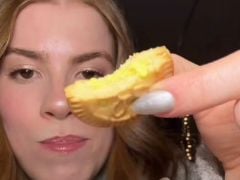Saffron is an expensive spice but also immensely beneficial to health. It is delicate and its stigmas, the part which catches pollen, are hand-picked painstakingly. The heating process it undergoes to increase its flavour is labour intensive. And finally, it is grown commercially in a limited number of regions around the world. All this makes saffron command a very high price. And, so, it is often adulterated and sold in the open market. But how can you check if the saffron you have brought is genuine or adulterated? The Food Safety and Standards Authority of India (FSSAI) has released a video that shows how to do that.
(Also read: 7 Kinds Of Millets, Health Benefits And Uses Shared By FSSAI)
Saffron strands are usually adulterated with dried tendrils of maize cob, according to the Food Safety and Standards Authority of India. To find this, FSSAI has suggested doing a simple test. Follow these steps:
Take a glass jar and fill it with hot water (70-80 degrees Celsius)
Add a few strands of saffron to it
If your saffron is unadulterated, it will release a typical saffron colour slowly into the water
The adulterated saffron will immediately release the colour added to it artificially into the water
This simple test suggested by FSSAI, a Government of India agency, can help you find the unadulterated saffron the next time you buy this spice. Check the post here:
(Also read: FSSAI to Train Street Food Vendors on Hygiene, Safety Standards)
In a similar way, you can also detect if your cup of tea is safe for consumption. Many tea leaves that get damaged during the manufacturing process are treated with colouring agents to improve their appearance. To detect if the tea you are brewing is adulterated, FSSAI had shared an easy test. All you have to do is spread the tea leaves out on filter paper and soak them with some water. Remove the leaves after a few minutes and wash the paper under running water. Then, in the light, examine the spots on the paper. Your tea leaves are entirely pure if there is no stain. However, if you notice a blackish-brown spot on the filter paper, the tea has been tampered with. Read more about it here.
It is critical to distinguish between pure spices and adulterated ones, as it allows us to consume the purest form of food.
